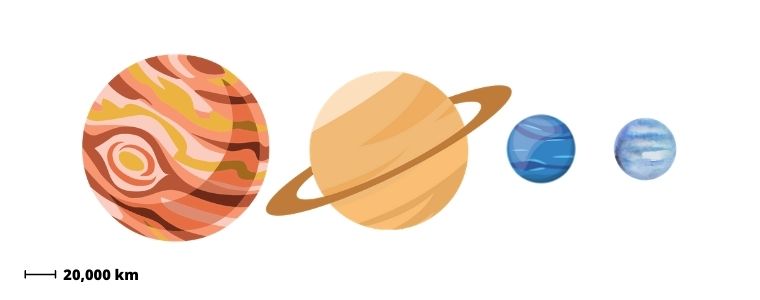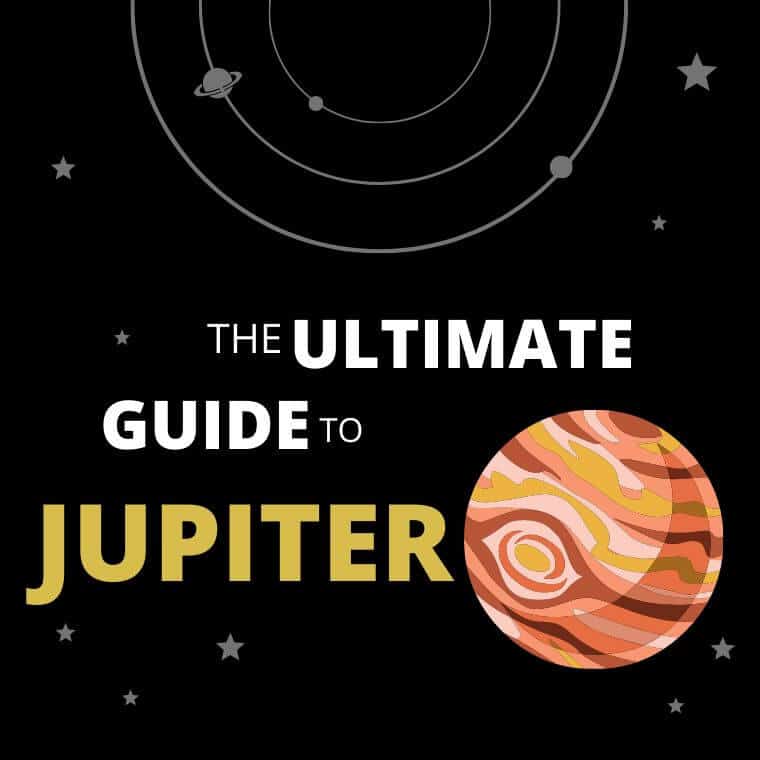Our solar system consists of 8 planets of which four are gas giants that contain ten times the mass of Earth, also known as Jovian or the outer planets. Their structure is mostly gas, with only a small amount of rocky materials within their body. The four gag giants in our solar system, from the nearest to the Sun to the furthest, are Jupiter, Saturn, Uranus, and Neptune. All other planets within our solar system are terrestrial planets. We take a look at some interesting gas giant facts and wander off into the individual wander of each gag giant.
Gas Giant Facts
- Our gas planets are Jupiter, Saturn, Uranus, and Neptune
- The gas giants are the furthest planets from the Sun
- The gas giants take longer to orbit the Sun due to their greater distance
- All four gas giants have many moons
- All four gas giants have a ring system
- You can not stand on the surface as they are balls of hydrogen and helium
- Gas giants are not all gas but molecular hydrogen and liquid metallic hydrogen
- Jupiter is the largest planet in our solar system, followed by Saturn
- Neptune and Uranus are also classed as “ice giants”
Gas Giant Sizes

| Planet | Diameter | Distance from the Sun | Distance Traveled in One Orbit of The Sun | Single Orbit (Year Length) |
|---|---|---|---|---|
| Jupiter | 86,881 miles | 483,600,000 miles | 3,037,000,000 miles | 142 Earth months. Almost 12 Earth years. |
| Saturn | 72,367 miles | 886,500,000 miles | 5,565,900,000 miles | 354 Earth months. (29.5 Earth years) |
| Uranus | 31,518 miles | 1,783,700,000 miles | 11,201,300,000 miles | 1009 Earth months. (84 Earth years) |
| Neptune | 30,599 miles | 2,795,200,000 miles | 17,562,300,000 miles | 1979 Earth months (almost 165 Earth years) |
What Is a Gas Giant?
The definition of a gas giant is a large planet of relatively low density consisting predominantly of hydrogen and helium, such as Jupiter, Saturn, Uranus, or Neptune.
What Is an Ice Giants
An ice giant is a planet that is mainly composed of elements heavier than hydrogen and helium, such as oxygen, carbon, nitrogen, and sulfur. We have two ice giants within our solars system Uranus and Neptune.
Gas Giant Ring Systems
Jupiter, Saturn, Uranus, and Neptune all have a ring system around them, and a disk made up of dust, chunks of material, and small moons, which are all formed around their parent body, creating a ring system. Saturn has the most extensive ring system within our solar system, which can be seen with binoculars.
Distances Between Gas Giant Planets
The distance between planets will vary depending on where each planet is in its orbit around the Sun. In some instances, these distances are closer, while other times they’re farther away.
The reason for this is that the planets have elliptical orbits and none of them are perfect circles. There’s a huge difference in distances between these celestial bodies depending on where they’re positioned along their circular orbit paths, which causes big changes when one planet comes closer to another than usual.
The table below shows the four gas giant planets and the average distance between them. The AU column is the distance in astronomical units.
The distance from the Sun to Earth is 1 AU, which equals 149,600,000 km.
Gas Giant Planets Distance Table
| FROM | TO | AU | KM | MILES |
|---|---|---|---|---|
| Jupiter | Saturn | 4.32 | 646,270,000 | 401,592,178 |
| Jupiter | Uranus | 14.01 | 2,095,220,000 | 1,301,969,708 |
| Jupiter | Neptune | 24.89 | 3,722,670,000 | 2,313,267,138 |
| Saturn | Uranus | 9.7 | 1,448,950,000 | 900,377,530 |
| Saturn | Neptune | 20.57 | 3,076,400,000 | 1,911,674,960 |
| Uranus | Neptune | 10.88 | 1,627,450,000 | 1,011,297,430 |




